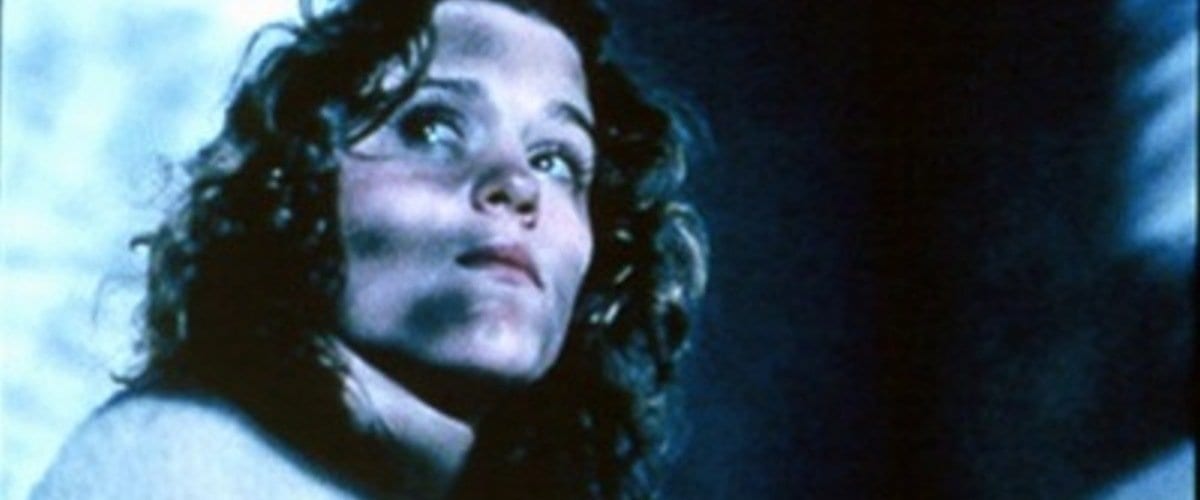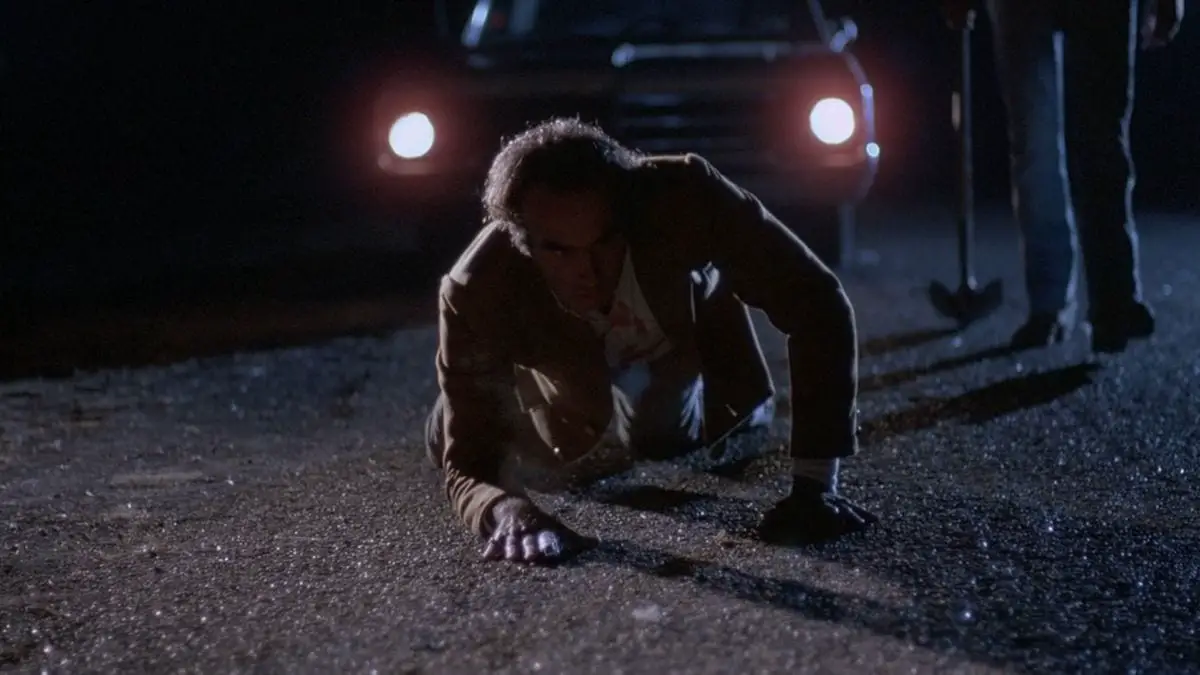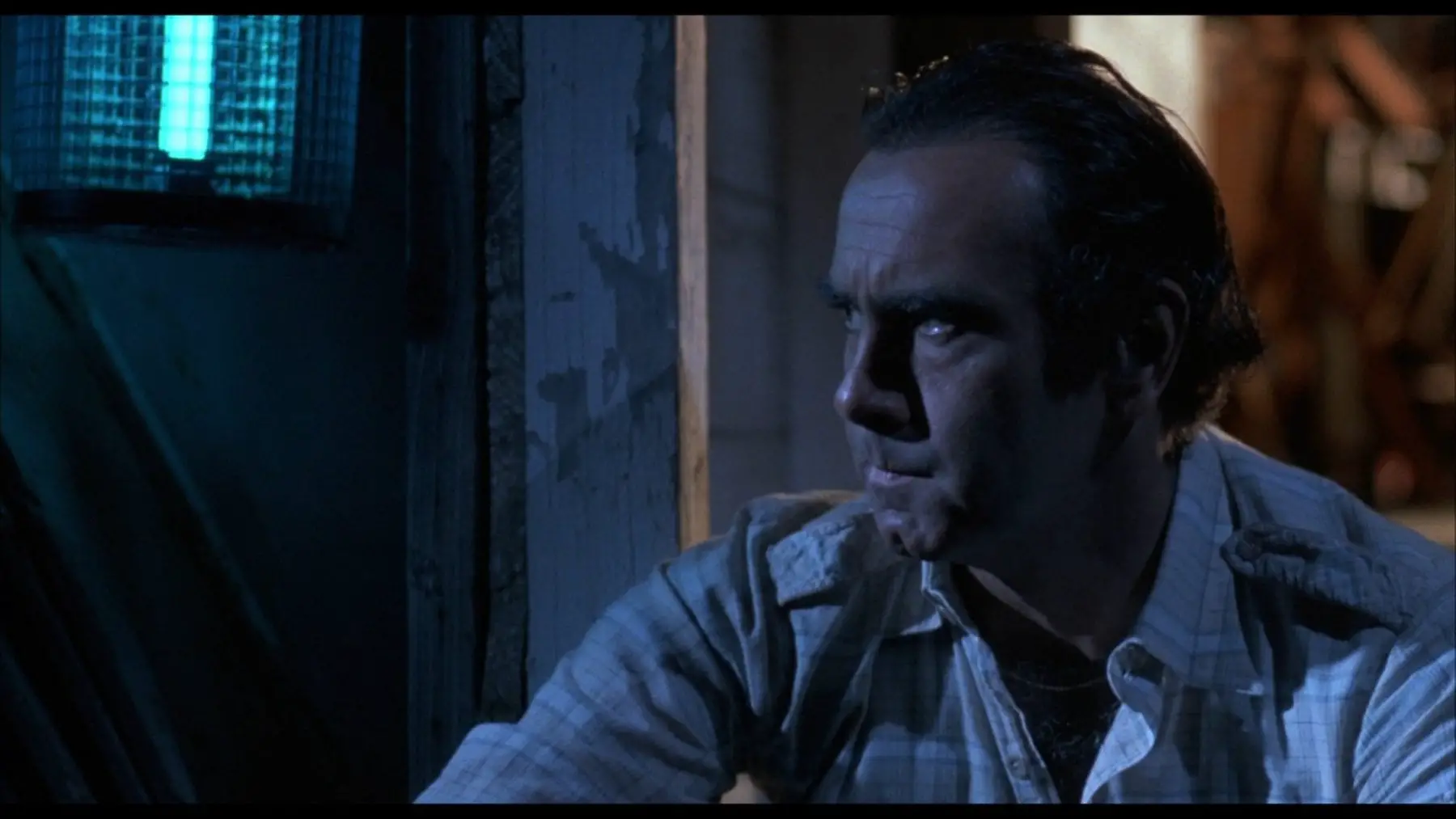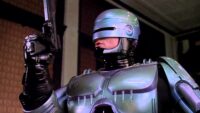Sometimes the oldest stories are the most alluring. Such is the case with the Coen Brothers’ (Joel and Ethan) debut film, Blood Simple. All of the elements could be pulled from the Old Testament. The young attractive wife Abby (Frances McDormand) of a local less-than-scrupulous bar owner Marty (Dan Hedaya) has an affair with her husband’s employee Ray (John Getz). An even more unscrupulous private investigator (M. Emmett Walsh) is hired to murder the cheating wife and her new found beau. Truly a tale as old as time itself, and in more modern cinematic times, could be the basic outline of many noir films. Blood Simple (1984) helped reinvent the genre for a new more modern audience by bringing back many of the genre tropes that had been abandoned and modernizing them, helping to create the neo-noir subgenre in the process. Blood Simple also firmly established the Coen Brothers and Frances McDormand as true powerhouses of talent that still produce some of the most exciting work to come out of Hollywood today.

During the classic Hollywood era of the 1940s, films like The Postman Always Rings Twice (1946) and Double Indemnity (1944) told similar tales filled with sultry, plotting attractive women (“dames” and “broads”) and tales filled with scamming private investigators, illicit sex, and murder. The word noir itself is a French word meaning black, gloomy, or dark. The film genre took the name because the overall tone of noir films (and neo-noir films) was dark, gloomy, and seemed to have a black heart. The characters were morally ambiguous and the audience was never quite sure who to root for…or how to feel about those that they did cheer.
Neo-noir films like Blood Simple took these elements and brought them into the present day, filling black and white shadow with neon bar signs and natural moonlight. The title is perfect, one of the greatest titles in cinematic history. The phrase “blood simple” was lifted by the Coens’ in homage to the Dashiell Hammett novel Red Harvest (1929). In the novel, Hammett says that a person is in a “blood simple” frame of mind when faced with an ongoing violent situation. Knowing that, the Coens’ put everything about the film right there in the title in the clearest, most abject way possible.
Some films make you think because of the non-linear structure of the plot or because they bring attention to a social issue that a particular audience was not aware of. Others offer spectacle and escapism through visual marvel at the wonders of modern technology. Blood Simple makes you think about the very nature of human existence and just how slimy and depraved it can get. The film may actually want you to feel that in the pit of your stomach more than it wants you to think anything at all. It’s too primal, sexual, and urgent for rational thought.

The Coen Brothers add a layer to the neo-noir film and specialize it even further into their own realm by placing it in rural Texas. Gone are the urban cities and suburbs and in their place is industrial rust land as far as the eye can see. There’s a genuine claustrophobia that builds throughout the entirety of Blood Simple that seems almost impossible in such a wide open space. But the darkness is all-encompassing in the quiet fields of Texas, making the blood look black in the moonlight.
The Coen Brothers had worked prior to their first feature with Sam Raimi on his horror masterpiece The Evil Dead (1980) and utilized many of the camera techniques that he had used. The fast moving camera work zooming in on pure terror when Marty attacks Abby after breaking into Ray’s apartment, it’s recognizable as the POV shots Raimi employed in The Evil Dead to show the demons rushing out from the ether and into the unsuspecting teens partying in the cabin.
Don’t call Blood Simple a horror film though. The events that play out throughout the film’s 95 minute run time are absolutely horrific, but it would be a mistake to call it horror. This is a neo-noir film through and through. This is the Coen Brothers debut feature—a fact that’s easy to forget while watching due to the expertise that they immediately brought to the table. Camera work that they would be heralded for later is already on full display here. One memorable Big Lebowski-like(1998) moment sees the Coens drag the camera straight down Marty’s bar, moving up and over a passed out drunk patron. The tone of Blood Simple would be revisited two decades later when the Coens would adapt Cormac McCarthy’s No Country For Old Men (2007.) There’s even a sequence roughly a third of the way throw Blood Simple (ultimately a fake-out) that mirrors the conclusion of No Country…, minus the fake-out.

Blood Simple would be nowhere near as effective without the amazing cast of veterans and newcomers alike. Almost everyone is pitch perfect in their ambiguity. They feel like real people that would fall into traps of lust and hasty acts of revenge. There’s no good guy to be found here, but there are some bad ones…and then there’s the private detective, played by M. Emmet Walsh, in a performance that is as terrifying and darkly funny as anything since the invention of the medium. He plays the PI like a lizard sitting basking in the hot Texas sun. He may appear to be a sleazy old cowboy just slumming for cash, but really he’s waiting for easy prey, just like that lizard in the desert.
Much like the Coen Brothers, it’s hard to believe that this is Frances McDormand’s first performance. She is, as they use to say, born for the camera. She plays the role of young Abby to silent yearning perfection. Much is always said about the Oscar winner’s brilliance, but her beauty is often overlooked in mentions. It is on full display in Blood Simple. She is the girl that you would clean up a murder for, bury a man alive for, even kill for. She’s got it. And a whole lot of bad comes with it.
Everyone remembers that sound though when they think of Blood Simple. That sickening sound of a shovel scraping along the road as Ray comes up behind a dying, shot, soaked in blood Marty. The scraping sound of the shovel and what comes next, Ray burying Marty alive, is truly shocking and shot beautifully in natural moonlight. The tension in the sequence is so tightly wound it’s amazing it doesn’t break…but it’s that scraping sound and the camera panning up from the pavement to Ray holding that shovel that sends shivers down your spine.

The greatest sequence in Blood Simple is the end. Abby is forced to take matters into her own hands (and her pearl-handled pistol) as Ray lay dead in the apartment in a final showdown with the private detective. She climbs out her bathroom window and into the apartment next through the adjacent window. The PI attempts to follow her, sticking his out her bathroom window, reaching to open the adjacent window Abby just used and she stabs his hand. As he’s stuck there, only a wall separates them and like a wild crazed animal, he empties his gun into the bathroom wall in a last-ditch effort to end Abby’s life. The scene is all shot with natural light (by a young Barry Sonnenfeld) and the adjacent apt is shrouded in darkness whereas Abby’s apt bathroom is full of light, so the gunshot holes create an effect of all these little beautiful rays of light into the darkness. It’s a brilliant scene that reminded me of Italian Giallo cinema master Dario Argento as much as anything by Alfred Hitchcock.
In a relatively short amount of time Blood Simple manages to create several memorable sequences. Every single time M. Emmet Walsh is on screen the movie is a master class in character acting. Dan Hedaya goes for broke as Marty, seething about his cheating wife next to a screeching bug zapper that seems to only hum louder the more he seethes. So many shots in the back seats of cars as characters ponder their fate and the choices they made, all with the backdrop of oil fields and wide-open Texas. Not since Alfred Hitchcock’s North by Northwest (1959) has a film made the most open of spaces feel as claustrophobic as being trapped in a casket.
Blood Simple would be masterful by any director at any time in their career, it just happens to be the Coen Brothers’ first. A new pair of exciting young filmmakers were in town, and Blood Simple was just a taste. The zany road comedy Raising Airzona (1987), the duo’s next feature along with Blood Simple cemented the duo’s reputation as being capable of just about anything.

